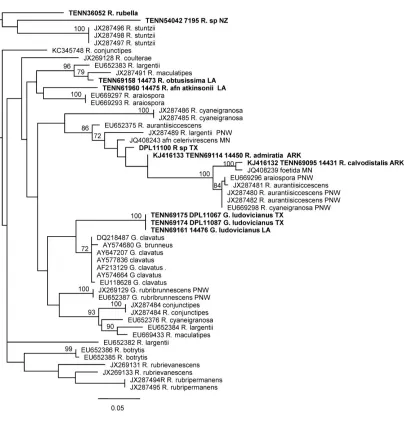A new species of Gomphus from southeastern United States
Full text
Figure



Related documents
Universal veil on stipe base filamentous undifferentiated hyphae 3– 9 μm wide, more abundant than on pileus, branching, hyaline, inflated cells like those on pileus
this species demonstrates a unique combination of characters including: annual habit; pileate basidiomata with a white pileus and pore surface; a dimitic hyphal system with non-
Hyphal system: trimitic, generative hyphae 2.5–3 µm diameter, thin walled, hyaline; binding hyphae 4.1 µm, thin walled, yellowish; skeletal hyphae 7.9 µm diameter, thick
Pileus 2.5–4.0 cm broad, convex with brown (6E4) umbo, surface covered by concentrically arranged brownish appressed fibrillose scales over whitish background;
Small basidiomata that turn blackish on drying, dark brown pileus, decurrent lamellae with reddish brown lamella-edge, mild alkaline odour, bitter taste, stipe that exudes
Lactarius volemus (Fr.) Fr. 2f Pileus 35–110 mm in diam., planoconvex, planoconcave or infundibuliform when mature with or without papilla; surface dry smooth,
But that species differs in having, smaller basidiomata with orange or yellowish white pileus, orange stipe base, amyloid basidiospores, exudative pileo- and
glatfelteri 1′ Pileus not white; stipe white or colored; clamp connections absent………..……..2 2 Pileus olive brown to some shade of grayish brown but never